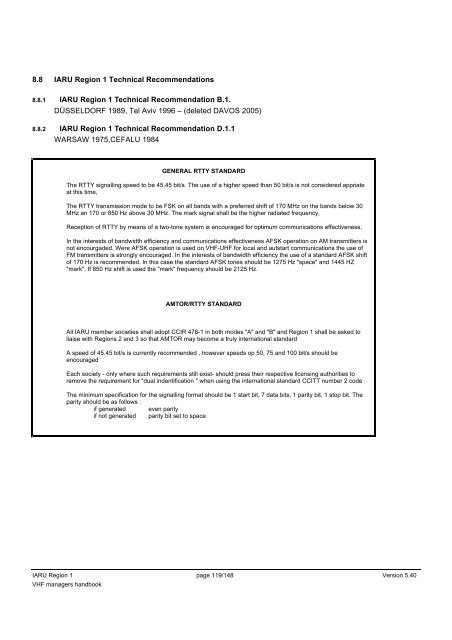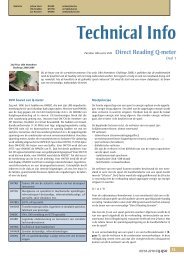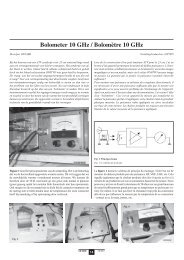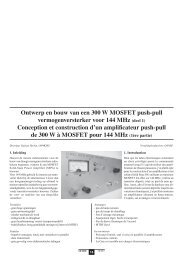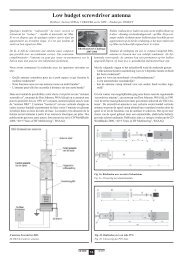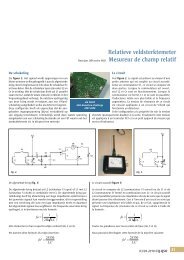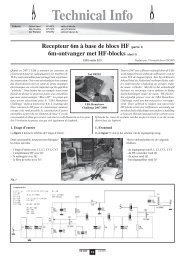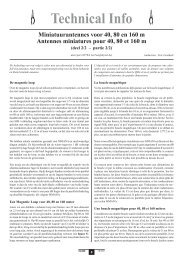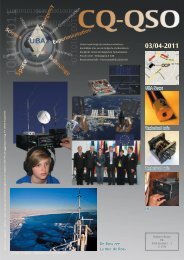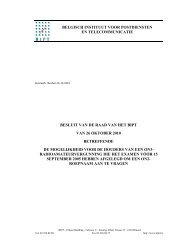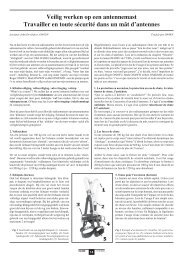IARU Region 1 VHF Managers Handbook - UBA
IARU Region 1 VHF Managers Handbook - UBA
IARU Region 1 VHF Managers Handbook - UBA
Create successful ePaper yourself
Turn your PDF publications into a flip-book with our unique Google optimized e-Paper software.
8.8 <strong>IARU</strong> <strong>Region</strong> 1 Technical Recommendations<br />
8.8.1 <strong>IARU</strong> <strong>Region</strong> 1 Technical Recommendation B.1.<br />
DÜSSELDORF 1989, Tel Aviv 1996 – (deleted DAVOS 2005)<br />
8.8.2 <strong>IARU</strong> <strong>Region</strong> 1 Technical Recommendation D.1.1<br />
WARSAW 1975,CEFALU 1984<br />
<strong>IARU</strong> <strong>Region</strong> 1 page 119/148 Version 5.40<br />
<strong>VHF</strong> managers handbook<br />
GENERAL RTTY STANDARD<br />
The RTTY signalling speed to be 45.45 bit/s. The use of a higher speed than 50 bit/s is not considered appriate<br />
at this time,<br />
The RTTY transmission mode to be FSK on all bands with a preferred shift of 170 MHz on the bands below 30<br />
MHz an 170 or 850 Hz above 30 MHz. The mark signal shall be the higher radiated frequency,<br />
Reception of RTTY by means of a two-tone system is encouraged for optimum communications effectiveness,<br />
In the interests of bandwidth efficiency and communications effectiveness AFSK operation on AM transmitters is<br />
not encourgaded. Were AFSK operation is used on <strong>VHF</strong>-UHF for local and autstart communications the use of<br />
FM transmitters is strongly encouraged. In the interests of bandwidth efficiency the use of a standard AFSK shift<br />
of 170 Hz is recommended. In this case the standard AFSK tones should be 1275 Hz "space" and 1445 HZ<br />
"mark". If 850 Hz shift is used the "mark" frequency should be 2125 Hz.<br />
AMTOR/RTTY STANDARD<br />
All <strong>IARU</strong> member societies shall adopt CCIR 476-1 in both modes "A" and "B" and <strong>Region</strong> 1 shall be asked to<br />
liaise with <strong>Region</strong>s 2 and 3 so that AMTOR may become a truly international standard<br />
A speed of 45.45 bit/s is currently recommended , however speeds op 50, 75 and 100 bit/s should be<br />
encouraged<br />
Each society - only where such requirements still exist- should press their respective licensing authorities to<br />
remove the requirement for "dual indentification " when using the international standard CCITT number 2 code<br />
The minimum specification for the signalling format should be 1 start bit, 7 data bits, 1 parity bit, 1 stop bit. The<br />
parity should be as follows :<br />
if generated even parity<br />
if not generated parity bit set to space.


